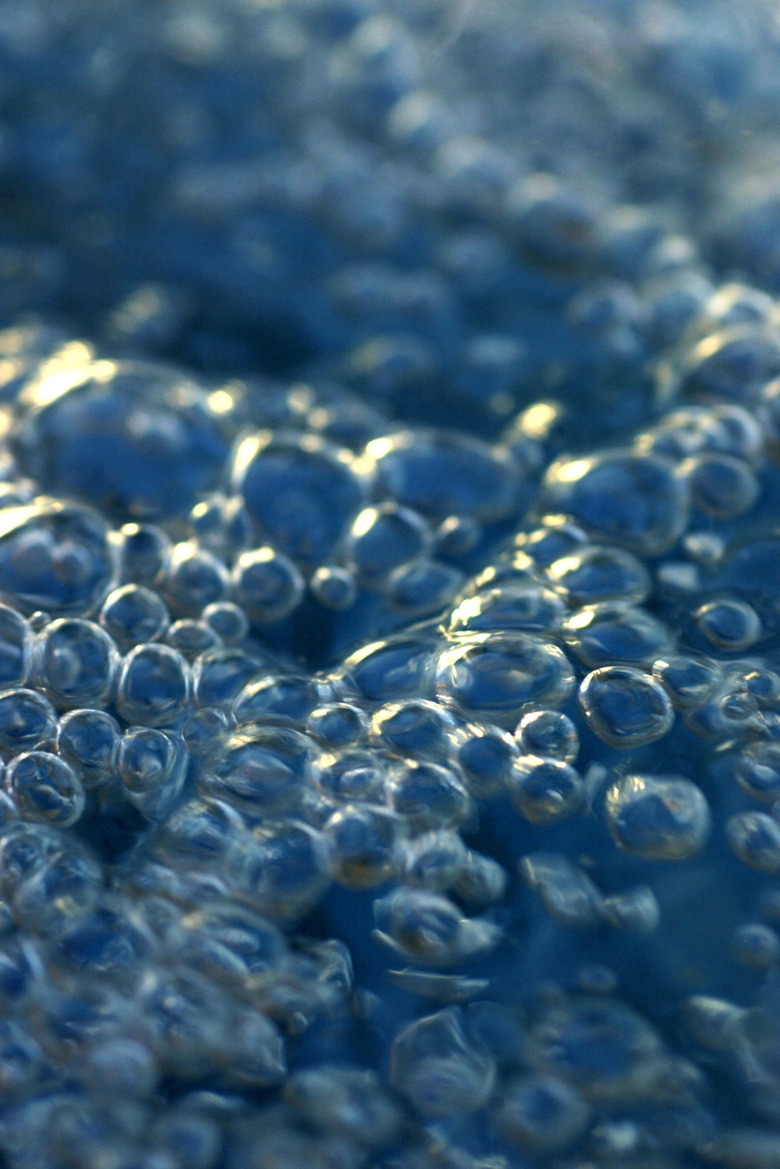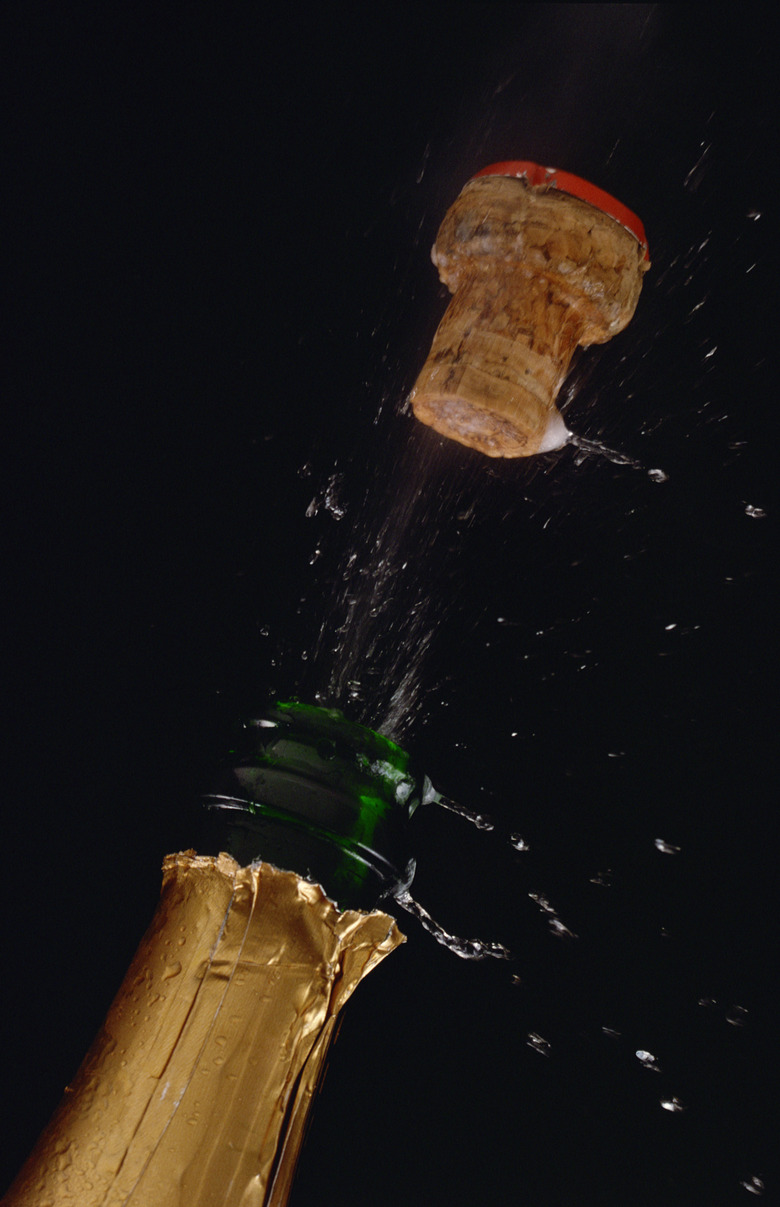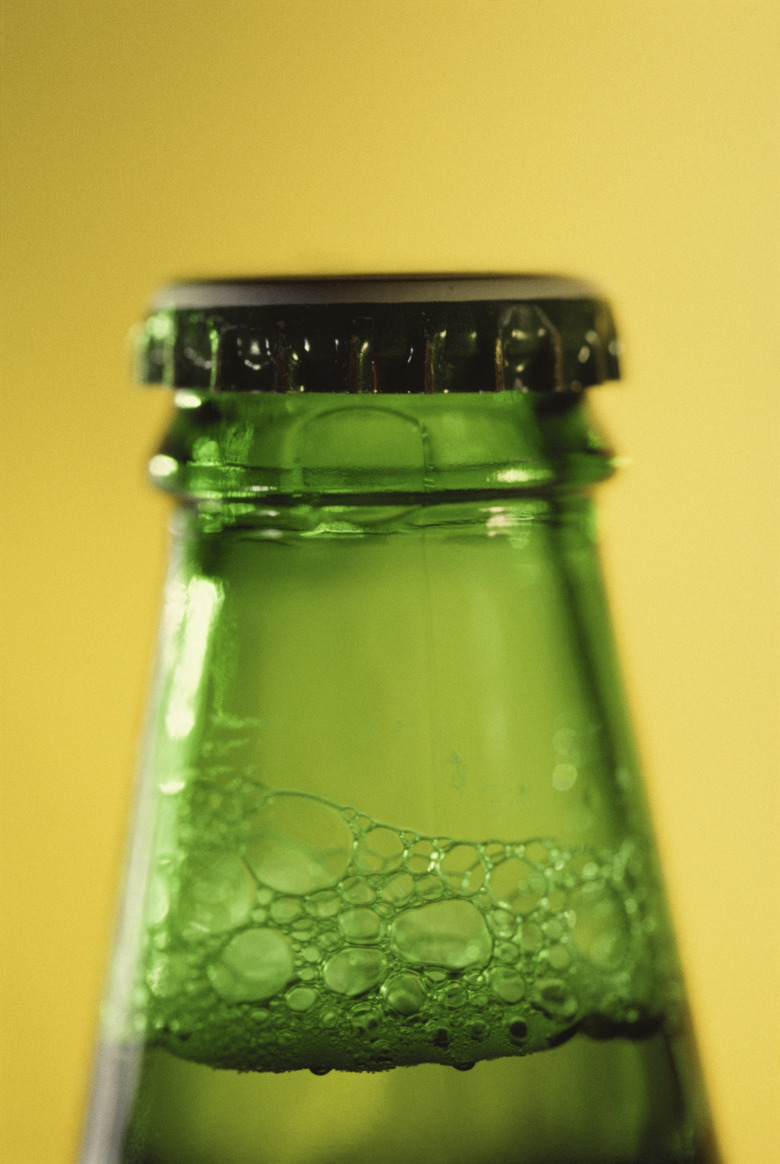The Effect Of Temperature On Bubble Solution
Temperature is one of several factors that affect gas (e.g., bubbles) in solution. Other factors are atmospheric pressure, chemical composition of the solution (e.g., soap), softness or hardness of the water and surface tension. For carbonated beverages such as champagne, which is fermented in bottles in cool cellars, a rapid rise in temperature causes explosive force when the cork is popped.
Gases in Solution
Gases in Solution
As temperature rises, the solubility of gas in solution decreases. For dissolved carbon dioxide, that means that a solution heating up from 30 to 60 degrees Celsius can hold half as much gas. The explanation for this phenomenon is that higher temperatures lead to more kinetic energy, and therefore more vapor pressure and the breaking of intermolecular bonds. According to Henry's Law, a gas's solubility in a liquid is directly proportional to the pressure of the gas above the solution's surface; thus, the less atmospheric pressure, the less gas in solution.
Soap Bubbles
Soap Bubbles
Soap bubbles have a tendency to pop in warmer water. The reason is that surface tension decreases as temperature rises and as soap quantity decreases. The bubble is also subject to evaporation at higher temperatures; as the water turns to vapor, the bubble breaks more easily. According to Bernoulli's principle, pressure affects the longevity of bubbles: those produced on a hazy, hot and humid day will pop sooner than those formed on a cold, clear day, when there is less atmospheric pressure. One bubble expert suggests freezing the solution before using it to slow down the evaporation time.
Taste of Bubble Solutions
Taste of Bubble Solutions
Carbonated beverages (such as soda pop, beer and champagne) are bottled under pressure in order to raise the amount of carbon dioxide dissolved in solution, as Elmhurst College's Virtual Chembook explains. Merely opening the bottle lowers the pressure above the solution, which fizzes and starts leaking carbon dioxide effervescence. The higher the outside temperature, the quicker the loss of dissolved carbon dioxide. When soda is left out to go flat, it not only loses its carbon dioxide bubbles, but also its taste. The same thing happens to water that is boiled — it, too, loses its taste along with its gas in solution, in this case, oxygen.
Applications
Applications
For removing suspended solids, grease, oil and other wastes from water, dissolved air or gas, flotation is widely used. Microscopic air bubbles join with the particles in suspension and bring them to the surface, where they can be removed. In scuba diving, controlling the formation of nitrogen bubbles in the diver's body, based on changes in temperature and pressure, is essential for preventing fatal expansion of nitrogen gas bubbles. Thus, the reduced gradient bubble model was developed as an algorithm for safe decompression while rising to the water's surface.
Cite This Article
MLA
Smith, Lisa. "The Effect Of Temperature On Bubble Solution" sciencing.com, https://www.sciencing.com/effect-temperature-bubble-solution-8744446/. 24 April 2017.
APA
Smith, Lisa. (2017, April 24). The Effect Of Temperature On Bubble Solution. sciencing.com. Retrieved from https://www.sciencing.com/effect-temperature-bubble-solution-8744446/
Chicago
Smith, Lisa. The Effect Of Temperature On Bubble Solution last modified August 30, 2022. https://www.sciencing.com/effect-temperature-bubble-solution-8744446/


